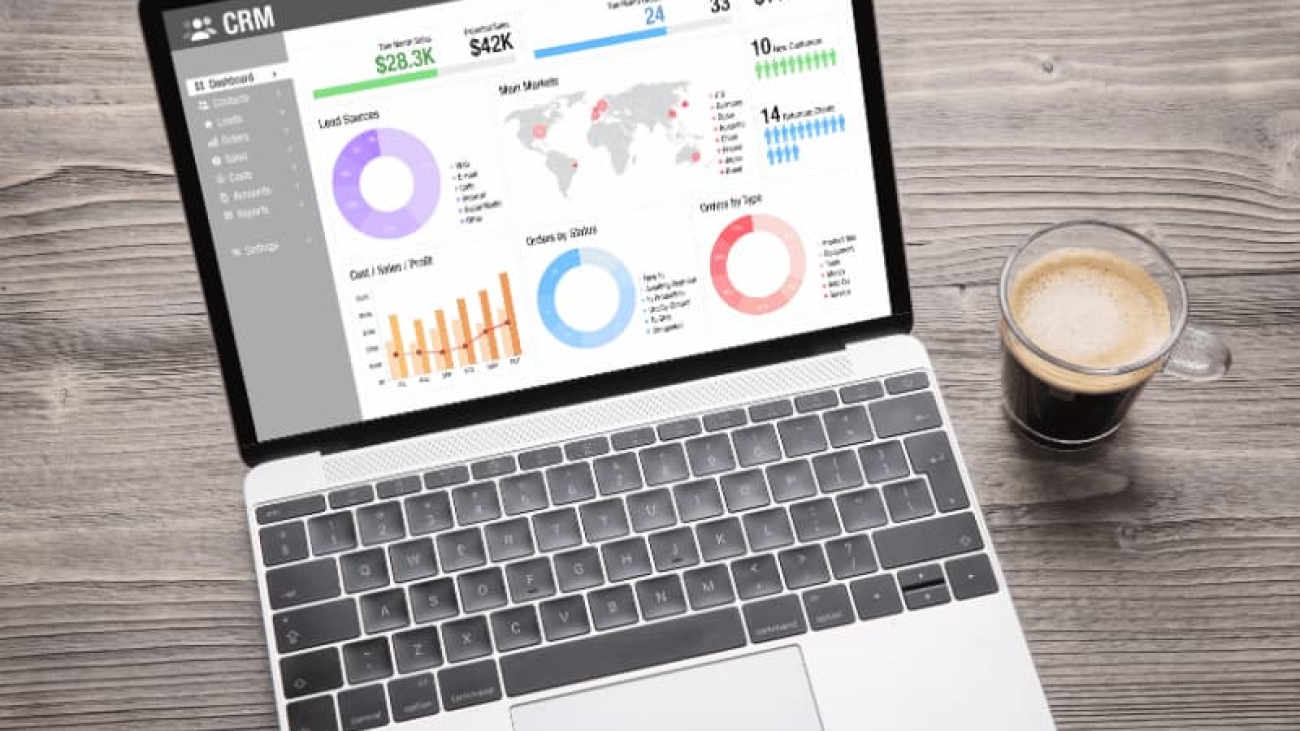Explore a wide array of customer experience examples to gain insights into how businesses can thrive by delivering exceptional service. From personalization to quick issue resolution, learn how to create memorable experiences that foster customer loyalty.
10 Customer Experience Quotes To Elevate Your Business
In today’s highly competitive business landscape, providing exceptional customer experiences is paramount. Customer experience, often referred to as CX, has become the key differentiator for successful businesses.
What is a Gantt Chart? A Comprehensive Guide to Project Management
In the fast-paced world of project management, staying organized and on track is crucial for success. One tool that has stood the test of time and continues to be a staple in project planning is the Gantt chart.
Lead Management Process: A Comprehensive Guide for Success
In today’s fast-paced business landscape, effective lead management is essential for companies seeking growth and success.
The Ultimate Guide to Customer Experience Analytics
Introduction
In today’s highly competitive business landscape, understanding and optimizing customer experience has become crucial for companies striving to stay ahead. This is where customer experience analytics comes into play. By leveraging advanced analytics techniques, businesses can gain valuable insights into customer behavior, preferences, and sentiments, enabling them to make data-driven decisions to enhance the overall customer experience. In this comprehensive guide, we will delve into the world of customer experience analytics, exploring its significance, benefits, and best practices for implementation.
Customer Experience Analytics: Unraveling the Power of Data
Customer experience analytics refers to the process of collecting, analyzing, and interpreting data related to customer interactions and experiences with a company’s products, services, and touchpoints across various channels. It involves harnessing the power of data to understand customer behavior, sentiments, and preferences, with the ultimate goal of improving customer satisfaction and loyalty.
The Importance of Customer Experience Analytics
Effective customer experience analytics provides businesses with a competitive edge by allowing them to:
- Anticipate Customer Needs: By analyzing customer data, businesses can gain insights into customers’ needs, desires, and pain points, enabling them to proactively address these issues and provide personalized experiences.
- Enhance Customer Satisfaction: Understanding customer sentiments and preferences allows businesses to tailor their offerings and interactions, resulting in increased customer satisfaction and loyalty.
- Drive Business Growth: By improving the overall customer experience, businesses can attract new customers, retain existing ones, and increase customer lifetime value, ultimately leading to sustainable business growth.
Implementing Customer Experience Analytics: Best Practices
To effectively implement customer experience analytics, businesses should follow these best practices:
- Define Clear Objectives: Start by defining specific objectives for your customer experience analytics initiative. What are the key metrics you want to measure? What outcomes are you aiming to achieve? Having clear objectives will guide your data collection and analysis efforts.
- Leverage Multi-Channel Data: Collect data from various touchpoints, including websites, mobile apps, social media platforms, call centers, and in-store interactions. This multi-channel approach provides a holistic view of the customer journey and enables comprehensive analysis.
- Utilize Advanced Analytics Techniques: Apply advanced analytics techniques such as machine learning, natural language processing, and sentiment analysis to extract valuable insights from customer data. These techniques can uncover patterns, trends, and correlations that traditional analytics methods may miss.
- Integrate Data Sources: Integrate data from different sources, such as CRM systems, customer feedback platforms, and operational databases, to create a unified customer view. This integration allows for a more comprehensive analysis and a deeper understanding of customer behavior.
- Segmentation and Personalization: Segment customers based on common characteristics and preferences to enable personalized experiences. Tailoring offerings and interactions to individual customers’ needs fosters a sense of loyalty and enhances customer satisfaction.
- Continuous Monitoring and Optimization: Implement a feedback loop where customer experience analytics insights are regularly monitored and used to optimize strategies and improve the overall customer experience continually.
Customer Experience Analytics: Common FAQs
Here are some frequently asked questions about customer experience analytics:
1. What is the role of customer experience analytics in business?
Customer experience analytics plays a vital role in businesses by providing insights into customer behavior, sentiments, and preferences. These insights help drive informed decision-making, leading to enhanced customer satisfaction, loyalty, and business growth.
2. What are the key metrics used in customer experience analytics?
Key metrics used in customer experience analytics include Net Promoter Score (NPS), Customer Satisfaction Score (CSAT), Customer Effort Score (CES), Churn Rate, Customer Lifetime Value (CLV), and First Response Time (FRT). These metrics help measure various aspects of the customer experience and track performance over time.
3. How can customer experience analytics benefit e-commerce businesses?
For e-commerce businesses, customer experience analytics can provide valuable insights into online shopping behavior, product preferences, and the effectiveness of marketing campaigns. This information enables businesses to optimize their website, personalize product recommendations, and deliver targeted marketing messages, resulting in increased conversions and customer satisfaction.
4. Is customer experience analytics only relevant to large enterprises?
No, customer experience analytics is relevant to businesses of all sizes. While large enterprises may have more extensive data sets and resources, small and medium-sized businesses can still benefit from customer experience analytics by focusing on key touchpoints, leveraging cost-effective analytics tools, and implementing targeted improvements based on customer insights.
5. How can businesses use customer experience analytics to reduce customer churn?
By analyzing customer data, businesses can identify the key drivers of customer churn. This could be poor product quality, inadequate customer support, or a subpar user experience. Armed with this knowledge, businesses can proactively address these issues, implement targeted retention strategies, and enhance the overall customer experience to reduce churn.
6. Are there any risks associated with customer experience analytics?
While customer experience analytics offers numerous benefits, there are a few potential risks to consider. These include data privacy concerns, data security risks, and the need for ethical data usage. Businesses must handle customer data responsibly, ensure compliance with data protection regulations, and maintain transparency in their data collection and analysis practices.
Conclusion
Customer experience analytics has emerged as a game-changer for businesses looking to thrive in today’s customer-centric era. By harnessing the power of data, businesses can gain valuable insights into customer behavior, sentiments, and preferences, enabling them to deliver personalized experiences and drive business growth. By following best practices and leveraging advanced analytics techniques, businesses can unlock the full potential of customer experience analytics and stay ahead of the competition.
Audience Segmentation Tools: A Comprehensive Guide to Effective Targeting
Introduction
In today’s competitive digital landscape, understanding your target audience is crucial for any business striving to succeed. Audience segmentation tools play a pivotal role in helping businesses identify and target specific groups of consumers. By dividing your audience into distinct segments based on their characteristics, preferences, and behaviors, you can create tailored marketing strategies that resonate with each segment. In this article, we will explore the concept of audience segmentation tools and delve into their significance in driving marketing success.
What Are Audience Segmentation Tools?
Audience segmentation tools are software applications or platforms that enable businesses to categorize their target audience into distinct segments based on various criteria. These tools utilize advanced algorithms and data analysis techniques to identify patterns and trends within a larger audience dataset. By employing audience segmentation tools, businesses can gain valuable insights into their customers’ demographics, psychographics, buying behaviors, and preferences.
The Benefits of Audience Segmentation Tools
1. Enhanced Marketing Personalization
By dividing your audience into segments, you can tailor your marketing messages and content to specific groups. Audience segmentation tools enable you to understand the unique needs and preferences of each segment, allowing you to deliver personalized experiences that resonate with your customers. Personalization leads to higher engagement, increased conversions, and improved customer satisfaction.
2. Improved Targeting and Acquisition
Understanding your audience segments enables you to optimize your marketing efforts and target the right customers effectively. Audience segmentation tools provide valuable data and insights that help you identify the most profitable segments for your business. By focusing your resources on these segments, you can allocate your marketing budget more efficiently, resulting in higher conversion rates and improved customer acquisition.
3. Enhanced Customer Retention
Segmentation tools not only assist in acquiring new customers but also play a crucial role in retaining existing ones. By understanding the unique characteristics and preferences of different audience segments, you can develop targeted retention strategies. These strategies can include personalized loyalty programs, exclusive offers, and tailored communication channels, fostering stronger relationships with your customers and increasing their loyalty to your brand.
4. Precise Product Development
Audience segmentation tools enable businesses to gain insights into their customers’ needs, pain points, and preferences. This information can be invaluable when developing new products or enhancing existing ones. By understanding the specific requirements of each audience segment, you can tailor your product offerings to meet their expectations, increasing the likelihood of success in the market.
The Process of Audience Segmentation
1. Data Collection
The first step in audience segmentation involves collecting relevant data about your target audience. This data can include demographics (age, gender, location), psychographics (values, interests, lifestyle), purchase history, online behavior, and more. Audience segmentation tools often integrate with customer relationship management (CRM) systems and other data sources to gather comprehensive customer information.
2. Data Analysis
Once the data is collected, it is time to analyze it using audience segmentation tools. These tools employ advanced algorithms to identify patterns, clusters, and correlations within the dataset. By grouping similar customers together based on their shared characteristics and behaviors, the tools create distinct audience segments.
3. Segment Creation
Based on the analysis, audience segments are created. Each segment represents a distinct group of customers who share common traits or behaviors. For example, a clothing retailer may create segments based on age groups, such as “Millennials,” “Generation X,” and “Baby Boomers.” The number and composition of segments depend on the goals and characteristics of your business.
4. Targeted Marketing Strategies
Once the segments are defined, businesses can develop targeted marketing strategies for each segment. These strategies involve creating personalized messages, offers, and experiences that cater to the specific needs and preferences of each segment. By delivering relevant content to each audience segment, businesses can maximize the effectiveness of their marketing efforts.
Frequently Asked Questions
FAQ 1: What are the key benefits of using audience segmentation tools?
Audience segmentation tools offer several benefits, including enhanced marketing personalization, improved targeting and acquisition, enhanced customer retention, and precise product development. These tools provide valuable insights that enable businesses to understand their customers better and deliver tailored experiences.
FAQ 2: How can audience segmentation tools improve marketing personalization?
By utilizing audience segmentation tools, businesses can gain a deep understanding of their customers’ characteristics, behaviors, and preferences. This knowledge allows them to deliver personalized marketing messages, content, and experiences that resonate with each audience segment, resulting in higher engagement and improved conversion rates.
FAQ 3: Can audience segmentation tools help businesses acquire new customers?
Yes, audience segmentation tools play a crucial role in customer acquisition. By identifying the most profitable audience segments, businesses can allocate their resources more efficiently and target the right customers effectively. This targeted approach increases the chances of acquiring new customers and maximizing the return on marketing investment.
FAQ 4: Are audience segmentation tools only beneficial for large businesses?
No, audience segmentation tools are beneficial for businesses of all sizes. Whether you are a small startup or a large corporation, understanding your target audience is essential for success. Audience segmentation tools enable businesses to gain insights into their customers’ preferences and behaviors, regardless of their scale or industry.
FAQ 5: How often should businesses update their audience segments?
Audience segments should be regularly reviewed and updated to ensure their relevance. As consumer behaviors and preferences evolve, businesses need to stay up-to-date to maintain effective targeting. By continuously analyzing and refining audience segments, businesses can adapt their marketing strategies and stay ahead of the competition.
FAQ 6: Can audience segmentation tools integrate with other marketing platforms?
Yes, many audience segmentation tools integrate seamlessly with other marketing platforms and systems. Integration with customer relationship management (CRM) systems, email marketing software, and advertising platforms allows businesses to leverage the insights gained from audience segmentation and implement targeted marketing campaigns across multiple channels.
Conclusion
Audience segmentation tools are indispensable for businesses aiming to thrive in today’s competitive marketplace. By leveraging these tools, businesses can gain deep insights into their customers’ characteristics, behaviors, and preferences. The ability to identify and target distinct audience segments empowers businesses to deliver personalized experiences, enhance marketing effectiveness, and drive sustainable growth. Embrace the power of audience segmentation tools and unlock the full potential of your marketing efforts.
Customer Satisfaction Survey Questions:Understand Your Customers
In today’s competitive business landscape, understanding your customers and their satisfaction levels is crucial for the success of your organization.
Lead Management Software: Everything You Need to Know
Lead management software is an essential tool for businesses looking to streamline their sales process. It helps manage and track leads from initial contact to conversion, ensuring that no potential customer falls through the cracks. However, with so many options available, choosing the right software can be overwhelming. In this post, we will cover everything you need to know about lead management software, including its benefits, how to choose the right one, and why Spechy CRM is the best option for your business.
What is Lead Management Software?
Lead management software is a tool that helps businesses manage, track and organize their leads. It allows sales teams to automate the process of capturing, nurturing, and converting leads into customers. With lead management software, businesses can easily track lead behavior and engagement, allowing them to identify the most promising leads and focus their efforts on converting them into customers.
Benefits of Using Lead Management Software
Using lead management software offers several benefits, including:
- Better Lead Segmentation: Lead management software allows you to segment leads based on demographics, behavior, and other criteria. This helps you tailor your marketing efforts to each group, increasing the likelihood of conversion.
- Improved Lead Nurturing: With lead management software, you can automate the process of nurturing leads with targeted content and follow-up emails. This helps keep your brand top-of-mind and increases the likelihood of conversion.
- Enhanced Lead Scoring: Lead management software allows you to score leads based on their behavior and engagement with your brand. This helps you prioritize your efforts on the leads that are most likely to convert.
How to Choose the Right Lead Management Software
Choosing the right lead management software can be challenging. Here are some factors to consider when making your decision:
- Features: Look for lead management software that offers features like lead tracking, lead nurturing, and lead scoring.
- Integrations: Make sure the software integrates with your existing CRM and marketing automation tools.
- Ease of Use: Choose software that is easy to use and implement.
Why Spechy CRM is the Best Lead Management Software
Spechy CRM is a powerful lead management software that offers all the features you need to manage your leads effectively. It integrates seamlessly with your existing CRM and marketing automation tools, making it easy to implement. Spechy CRM offers lead tracking, lead nurturing, and lead scoring, as well as detailed analytics to help you optimize your sales process. With Spechy CRM, you can streamline your lead management process and focus your efforts on converting leads into customers.
FAQ:
Q: How does lead management software work?
A: Lead management software helps businesses manage, track, and organize their leads. It allows sales teams to automate the process of capturing, nurturing, and converting leads into customers.
Q: What are the benefits of using lead management software?
A: Using lead management software offers several benefits, including improved lead segmentation, enhanced lead nurturing, and better lead scoring.
Q: How do I choose the right lead management software?
A: When choosing lead management software, consider factors like features, integrations, and ease of use.
Q: Why is Spechy CRM the best lead management software?
A: Spechy CRM offers all the features you need to manage your leads effectively, integrates seamlessly with your existing CRM and marketing automation tools, and provides detailed analytics to help you optimize your sales process.
In conclusion, lead management software is an essential tool for businesses looking to streamline their sales process. Choosing the right software can be challenging, but by considering factors like features, integrations, and ease of use, you can find the right software for your business. And if you want to take your lead management to the next level, Spechy CRM is the best option. With its powerful features and seamless integration, Spechy CRM can help you convert more leads into customers and grow your business.
Why is Customer Relationship Management Important In a Market Orientation?
In today’s competitive business landscape, maintaining strong relationships with customers is crucial for sustainable growth and success. This is where Customer Relationship Management (CRM) comes into play.
How To Measure Customer Experience: A Comprehensive Guide
Measuring customer experience is a critical undertaking for businesses seeking to gain a competitive edge and foster customer loyalty. By utilizing a combination of surveys, metrics, and social media listening, organizations can gather valuable insights to enhance their customer experience strategies. Remember, customer experience is an ongoing journey that requires continuous monitoring, analysis, and improvement. By prioritizing customer satisfaction and consistently exceeding expectations, businesses can build strong relationships, drive growth, and thrive in today’s dynamic marketplace.






